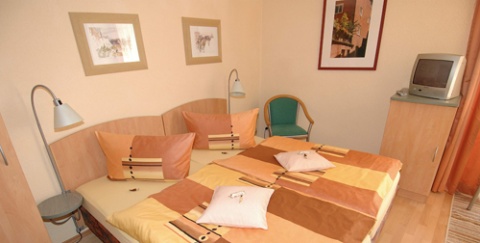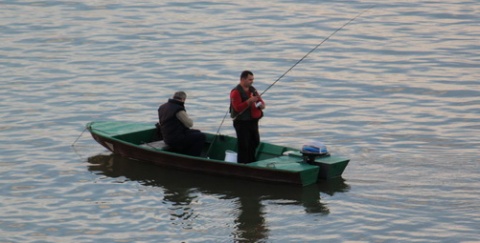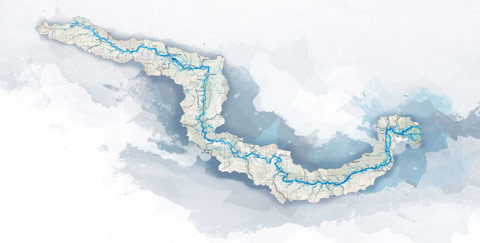
Tour de Baroque: abbeys, churches and period splendour
The 300km Tour de Baroque is one of the oldest long-distance cycle routes in Germany. It runs from Neumarkt in the Upper Palatinate to the UNESCO World Heritage city of Regensburg. From there it continues along the Danube to Passau, the town on three rivers that makes you feel like you're in Italy. ...
City: Passau
Country: Germany
Tour de Baroque: abbeys, churches and period splendour
Baroque, the last truly universal European art movement, influenced everything from architecture to music and painting, and succeeded the Renaissance style in Italy. Bavaria in particular proved to be fertile ground for baroque ideas; baroque architecture was embraced with greater zeal here than elsewhere and gave rise to a heyday of its own. It emerged against a background of absolute power held by the church and nobility, and was partly an expression of joie de vivre and devout piety following the horrors of the Thirty Years' War and other struggles. Baroque architecture, together with sculpture and painting, is characterised by sweeping shapes and lavish ornamentation, sometimes verging on – or even going beyond – the extravagant. Landscapes were incorporated into architectural designs like never before, with resplendent abbey grounds and palace gardens complementing the buildings to create a staggeringly beautiful synthesis of the arts. Furthermore, most abbeys and churches were built on very exposed riverbank plots, visible from afar as they towered over their surroundings.
This illustrious era forms the focus of the Tour de Baroque cycle route, which runs for nearly 300 kilometres. From its starting point just north of the Danube, in the Upper Palatinate town of Neumarkt near Nuremberg, the path meets the Danube and tracks the course of the river. From Kelheim the route follows a section of the Danube Cycle Route, guiding you through Regensburg, Straubing and Deggendorf and on to Passau. In the town of Freystadt, just 14 kilometres after setting off from Dietfurt an der Altmühl, you will come across your first major building dating from Germany's high baroque period: the Maria Hilf pilgrimage church. The next landmark on the route is Weltenburg Abbey. Though it is thought to date back as far as the 9th century, large parts of the abbey complex, such as the church and buildings around the courtyard, bear the hallmarks of baroque era architecture. The city of Regensburg is in itself a synthesis of different styles and eras, but it goes without saying that the baroque movement still has a strong presence here. The same is true of the old ducal town of Straubing, where you can see the influence of several different periods – from Gothic to Baroque via the Renaissance. A typical example is the Trinity Column on Theresienplatz square, a votive column standing 15 metres that symbolises baroque piety. After a detour to Metten Monastery – a shining example of an abbey built in the Romanesque period and subsequently updated to Gothic and eventually baroque design – the route continues 40 kilometres to Deggendorf. Here, baroque styling in its purest form is embodied in the tower of the Holy Sepulchre Church. And in Passau, the final stop on the route, the baroque old town incorporates the architectural charm of Venice. A fusion that is as enchanting and memorable as the Tour de Baroque route itself.
This illustrious era forms the focus of the Tour de Baroque cycle route, which runs for nearly 300 kilometres. From its starting point just north of the Danube, in the Upper Palatinate town of Neumarkt near Nuremberg, the path meets the Danube and tracks the course of the river. From Kelheim the route follows a section of the Danube Cycle Route, guiding you through Regensburg, Straubing and Deggendorf and on to Passau. In the town of Freystadt, just 14 kilometres after setting off from Dietfurt an der Altmühl, you will come across your first major building dating from Germany's high baroque period: the Maria Hilf pilgrimage church. The next landmark on the route is Weltenburg Abbey. Though it is thought to date back as far as the 9th century, large parts of the abbey complex, such as the church and buildings around the courtyard, bear the hallmarks of baroque era architecture. The city of Regensburg is in itself a synthesis of different styles and eras, but it goes without saying that the baroque movement still has a strong presence here. The same is true of the old ducal town of Straubing, where you can see the influence of several different periods – from Gothic to Baroque via the Renaissance. A typical example is the Trinity Column on Theresienplatz square, a votive column standing 15 metres that symbolises baroque piety. After a detour to Metten Monastery – a shining example of an abbey built in the Romanesque period and subsequently updated to Gothic and eventually baroque design – the route continues 40 kilometres to Deggendorf. Here, baroque styling in its purest form is embodied in the tower of the Holy Sepulchre Church. And in Passau, the final stop on the route, the baroque old town incorporates the architectural charm of Venice. A fusion that is as enchanting and memorable as the Tour de Baroque route itself.
DANUBE.TRAVEL has no control over the website content generated by users and/or visitors, neither such content represents a statement, opinion, recommendation or rating by DANUBE.TRAVEL. For further information please refer to DANUBE.TRAVEL – General Website Terms and Conditions of Use.
Places near this location
Where to stay
What to do
Danube experience
My Danube
Trip Plan
Your Trip Plan is currently empty. Add a city, location or route to create your trip plan.
 EN
EN DE
DE









_480x243.jpg)


